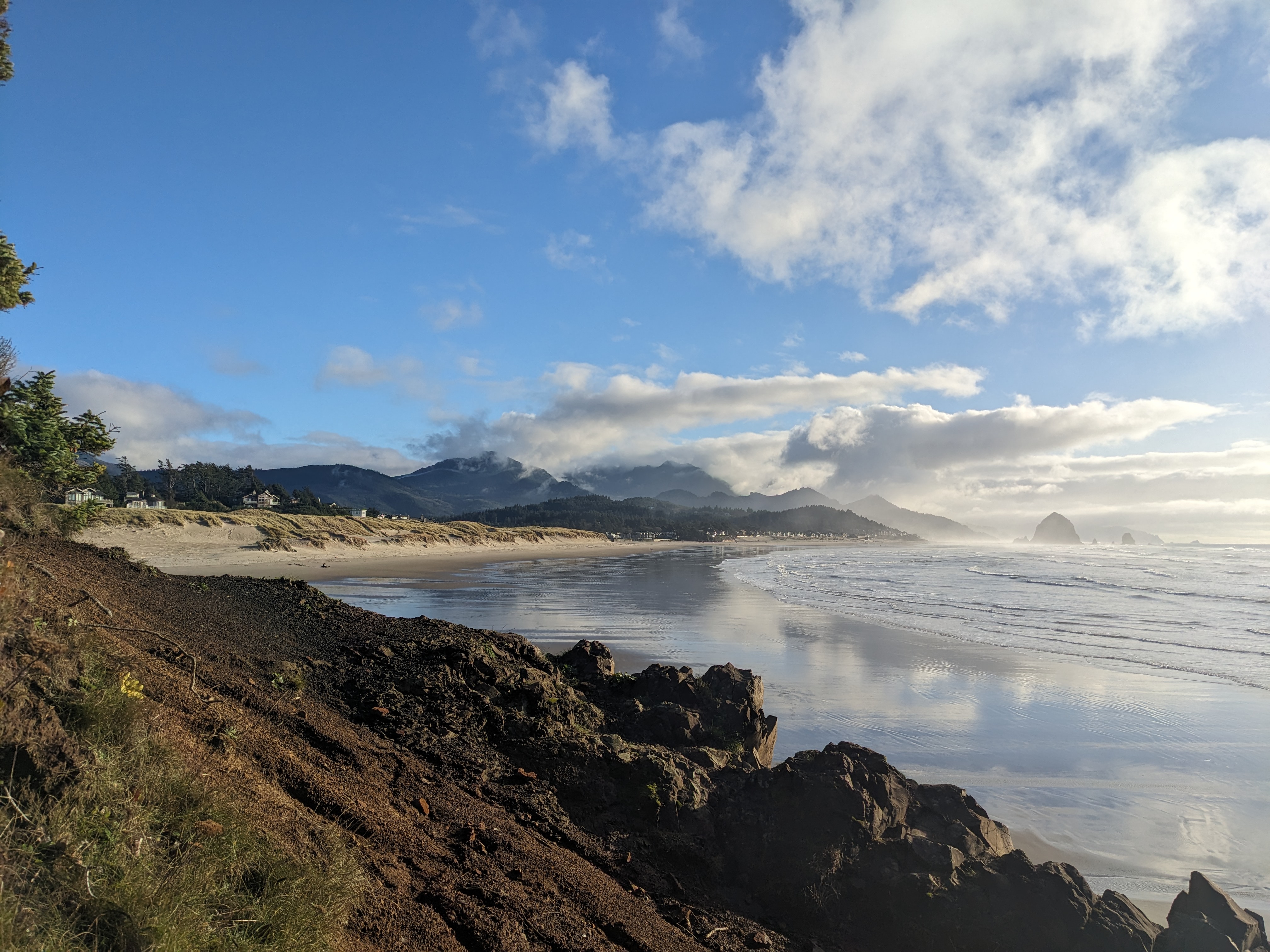
Have you been curious about what Surfrider has been working on at Ecola Creek? We’ve been hard at work behind the scenes, and now we’re excited to share what we’ve been cooking up! Over the past few years, Surfrider has been working with the City of Cannon Beach, Columbia River Estuary Study Taskforce (CREST), Integral Consulting Inc, local homeowners, Oregon State Parks, and others to find a solution to the ongoing erosion issues on the north bank of Ecola Creek in Cannon Beach. This severe erosion threatens the Breakers Point Condominiums, as well as City infrastructure and an important public beach access point. We’ve worked with CREST to secure federal funding through a FEMA grant, demonstrating our commitment to help find a solution that strengthens the community, and improves coastal resilience and public access. Now, with the collaboration of many stakeholders, we have arrived at an inspiring juncture, one in which the City of Cannon Beach and the Breakers Point homeowners are leaning into an innovative solution for erosion control.
We’ve been a bit quiet on this topic, as our team has been conducting extensive background research, modeling the many dynamic factors at play in this area, and collecting community input surrounding shoreline management and visioning for this stretch of coastline. The Breakers Point property is not eligible for armoring, which has presented us with the exciting opportunity to do what we are always advocating for- conduct detailed analysis of alternatives to typical shoreline armoring and find a better path forward. After months of research and modeling, our engineering team has completed their analysis and last week, presented their findings to the Cannon Beach City Council.

While options like continual localized beach fill do exist, they are not a long-term fix and will be costly in the long run. We already know shoreline armoring is off the table, which leaves us with the design we have all been waiting for- something rooted in nature, able to adapt to the dynamic forces at play in this area. The engineering team has proposed a sort of artificial “log jam”, in which large logs are partially buried, lashed together with a natural fiber, and then filled in with a layer of cobble, sand, and planted over with dune grass. There will be a path cut in to preserve access to the beach, and it will largely be sourced from materials that are native to that beach and estuary. This design will allow for dynamic sand movement, and will likely trap additional sand over time, further stabilizing the bank. For a more in-depth look at the modeling findings and discussion of their design, check out the video below in which Integral Consultant Kara Scheu, Ph.D., presents this to the City Council (the presentation begins at 24:34; watch minutes 1:00-9:00 to hear some additional stoke from community members).
Being constructed out of natural materials and mimicking the existing ecosystem, this design strikes the balance between providing long-term protection while not causing irreparable damage to the beach in the process. Yes, it will require maintenance, just like any other erosion control measure- including riprap and seawalls- but when considering the costs of shoreline protection, we must not only count the dollars for installation or planting, we must also recognize potential costs to the community when beaches are harmed.
This initial design was widely accepted by the Councillors and the community, and we, along with our partners, are excited to continue the design process in Phase II. Madeline Ishikawa, Habitat Restoration Project Manager with CREST, said “CREST is pleased to be moving into design phase II for the Ecola Creek Bank Stabilization project. We look forward to working with our project partners on this nature-based approach to provide a solution that will benefit the whole community.”
It is extremely exciting to be a part of this project and this team. Without this collaboration, and an intentional centering of the health of the beach, we could not have arrived at this moment. This project will serve as a model for other nature-based solutions in Oregon and beyond, getting us closer to that shared goal of protecting our public beaches.
Check out my first article on this subject here.
